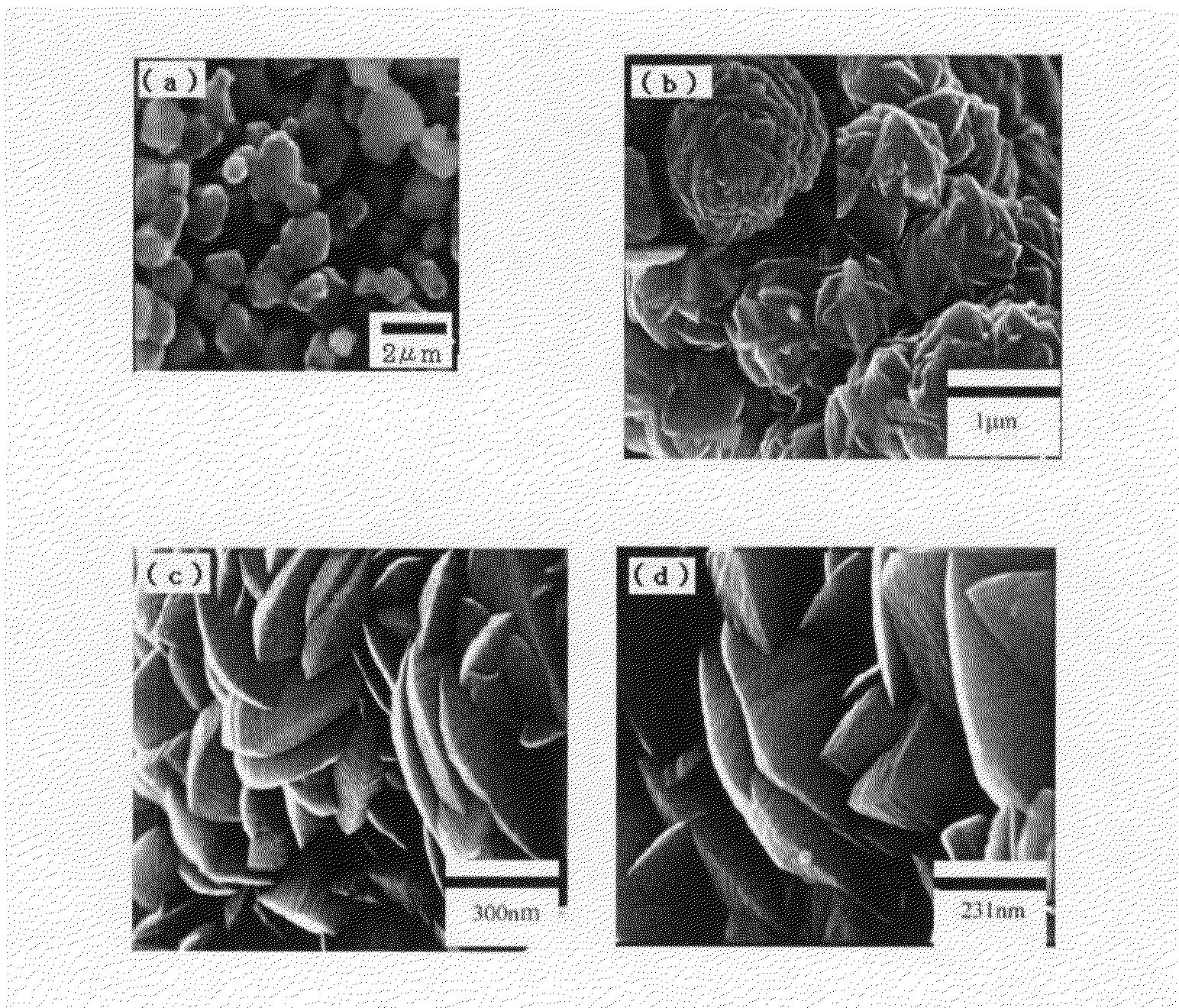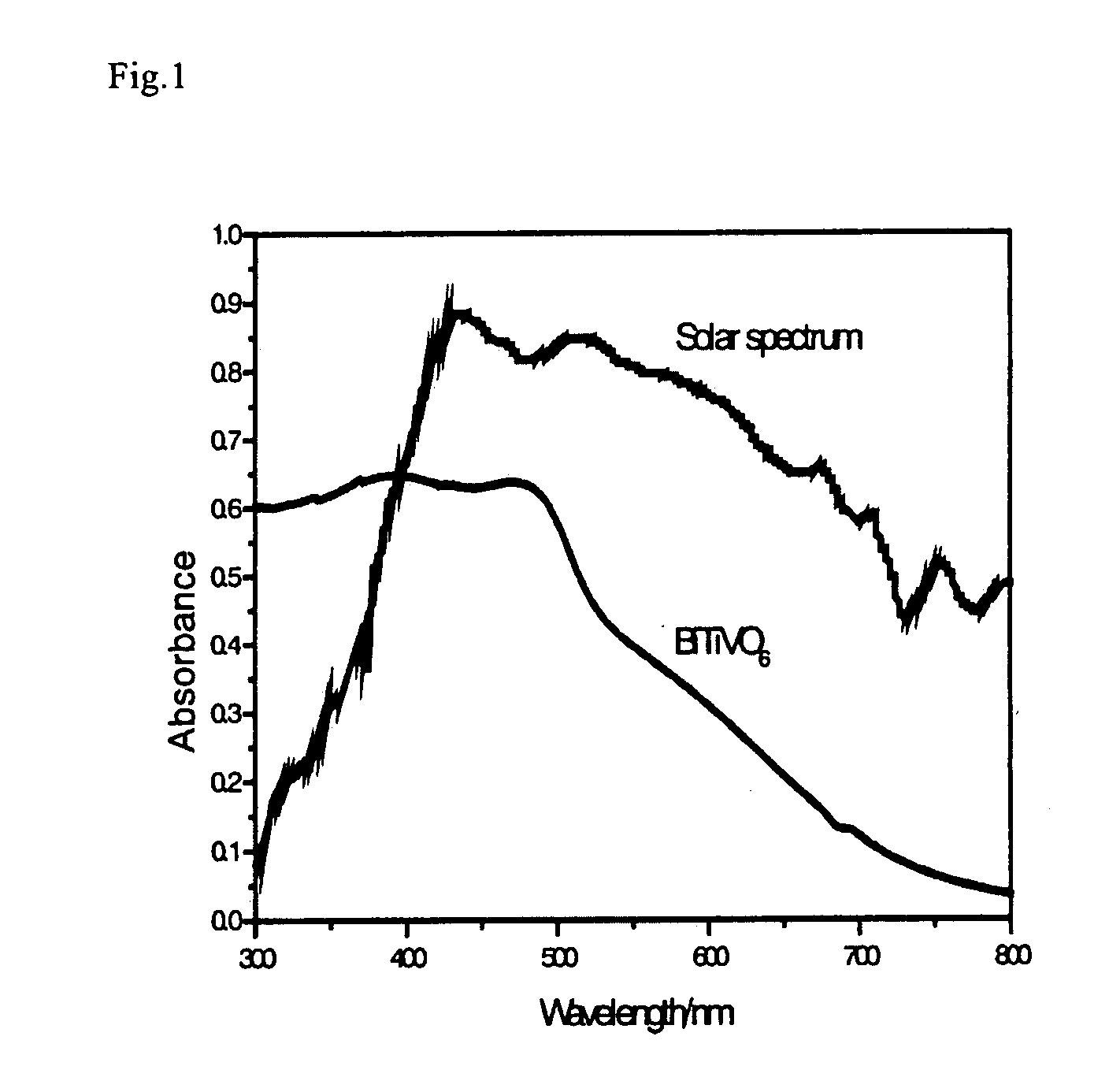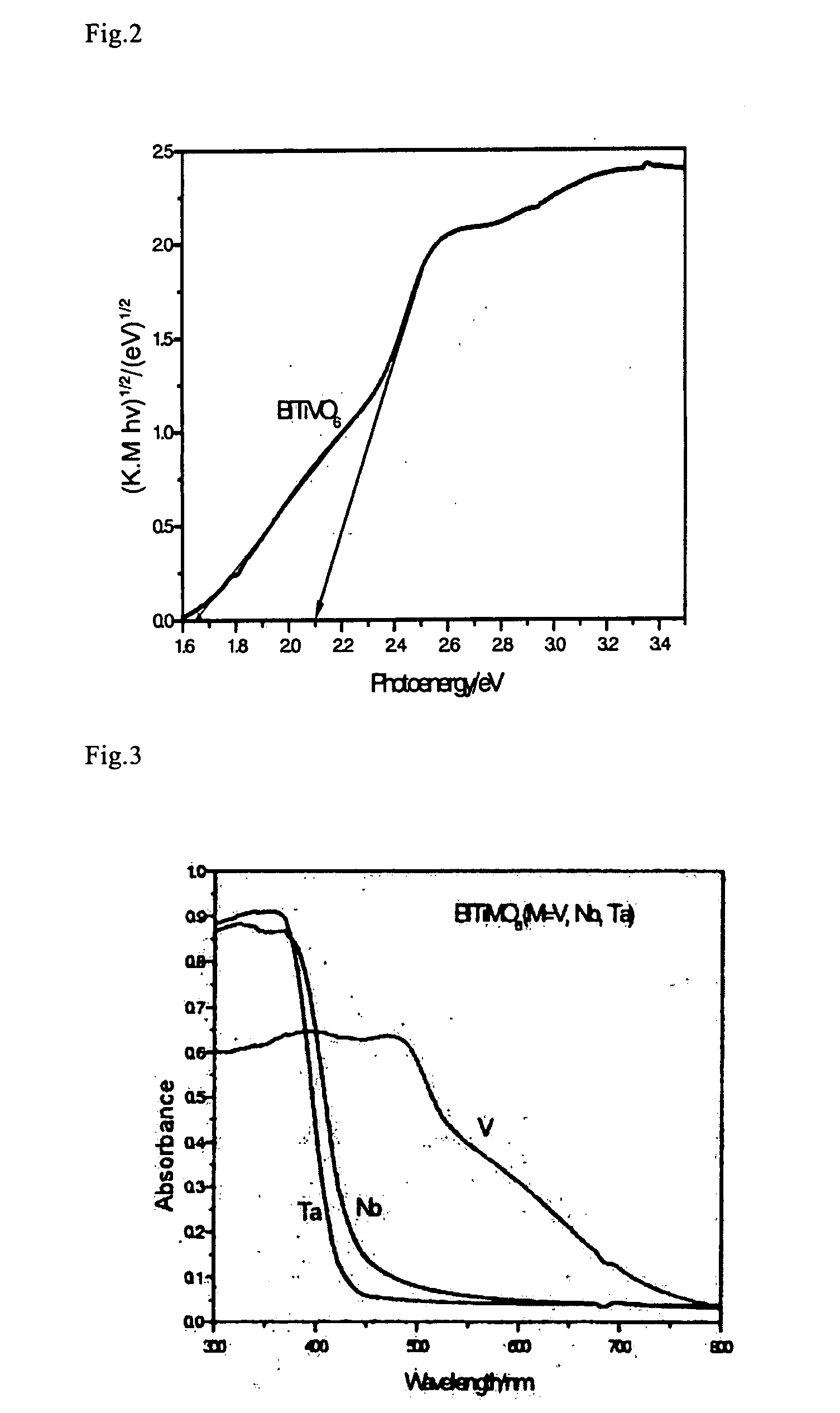Composite Metal Oxide Photocatalyst Exhibiting Responsibility to Visible Light
- Summary
- Abstract
- Description
- Claims
- Application Information
AI Technical Summary
Benefits of technology
Problems solved by technology
Method used
Image
Examples
embodiment 1
(Manufacturing Methods for Microparticles of Photocatalysts BiTiVO6, BiTiNbO6, and BiTiTaO6)
[0063]First, a manufacturing method for photocatalyst BiTiVO6 microparticles according to the present invention will be described. As reactants, Bi2O3 (99.99%, manufactured by Wako), TiO2 (ST-01) and NH4VO3 (99.0%, manufactured by Wako) are used, and appropriate amounts of these are mixed in a powder form. Next, the mixed reactants are first-fired, for example, in the atmosphere, at a firing temperature of 700° C. for 30 hours. Then, the fired product is cooled to a room temperature, finely crushed, and then again second-fired at 850° C. for 30 hours. Then, by slow cooling, the objective photocatalyst can be manufactured. A dark yellow powder is obtained.
[0064]Similarly, microparticles of photocatalysts BiTiNbO6 and BiTiTaO6 according to the present invention are manufactured as follows. That is, in the above-described manufacturing method for the photocatalyst BiTiTaO6, mixed reactions respe...
embodiment 2
[0071]As described above, it has been suggested that the photocatalyst of the present invention can be utilized as a method for producing oxygen and / or hydrogen by photodecomposition of water under irradiation of water including at least visible light, and this will be described while showing concrete data in the following.
[0072]FIG. 7 shows action spectra of photocurrent quantum yields (IPCEs) of a photocatalyst BiTiVO6 microparticle membrane according to the present invention.
[0073]Here, as measurement conditions, in a solution of an electrolyte Na2SO4 (0.5M), a potential (0.4V, 0.5V, 1.0V, 1.2V, 1.3V) is applied to a BiTiVO6 membrane electrode on an Ag / AgCl reference electrode basis. FIG. 7 shows wavelength dependence of photocurrent quantum yields of the BiTiVO6 membrane electrode, and it can be understood that a photocurrent due to oxidative decomposition of water rises from a wavelength of irradiating light of 500 nm, and oxidative decomposition of water occur...
embodiment 3
(Organic-matter Decomposition)
[0080]As described above, since the photocatalyst of the present invention has both high oxidization capacity and reduction capacity to other substances, this can be applied not only to a water-splitting reaction but also to environmental cleanup such as an organic-matter decomposition reaction, a metal-ion reduction reaction, or a nitride oxide treatment, so that endocrine disrupting chemicals existing in a to-be-purified system, particularly, a to-be-purified water system can be photodecomposed.
[0081]Hereinafter, a methanol decomposition reaction will be described as an organic-matter decomposition reaction while showing concrete data. In FIG. 13, shown is an action spectrum of photocurrent quantum yields (IPCEs) of a photocatalyst BiTiVO6 microparticle membrane according to the present invention in the presence of methanol in comparison with that in the absence of methanol. As a result of adding methanol, a significant increase in photooxidation curr...
PUM
| Property | Measurement | Unit |
|---|---|---|
| Temperature | aaaaa | aaaaa |
| Temperature | aaaaa | aaaaa |
| Temperature | aaaaa | aaaaa |
Abstract
Description
Claims
Application Information
 Login to View More
Login to View More - R&D
- Intellectual Property
- Life Sciences
- Materials
- Tech Scout
- Unparalleled Data Quality
- Higher Quality Content
- 60% Fewer Hallucinations
Browse by: Latest US Patents, China's latest patents, Technical Efficacy Thesaurus, Application Domain, Technology Topic, Popular Technical Reports.
© 2025 PatSnap. All rights reserved.Legal|Privacy policy|Modern Slavery Act Transparency Statement|Sitemap|About US| Contact US: help@patsnap.com



